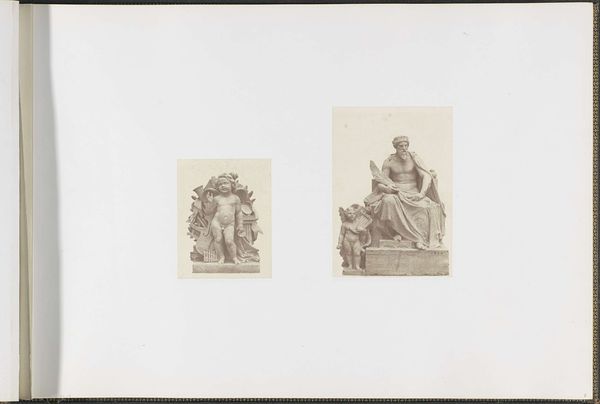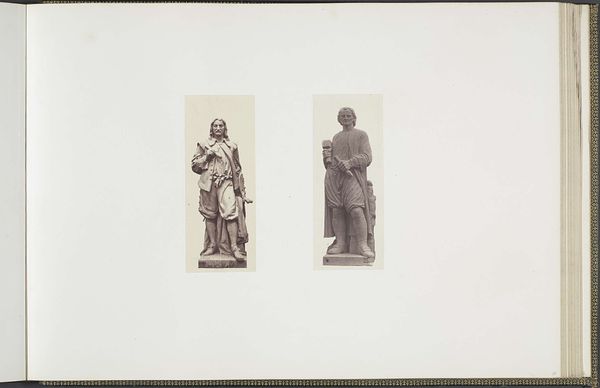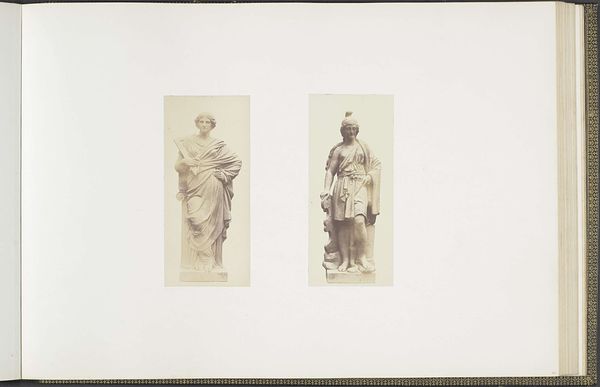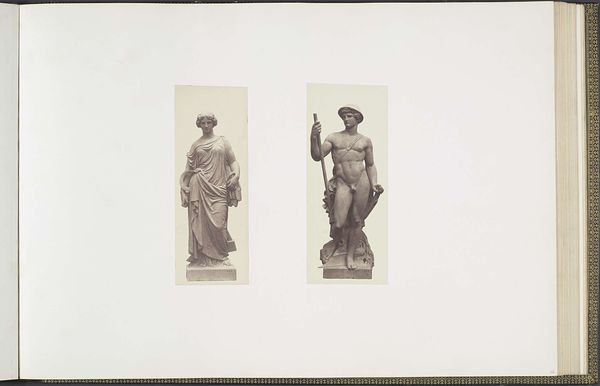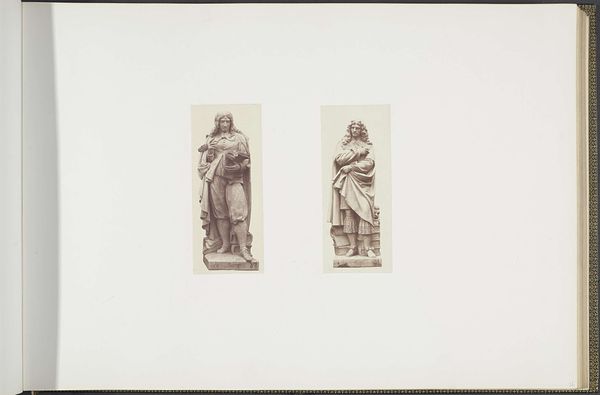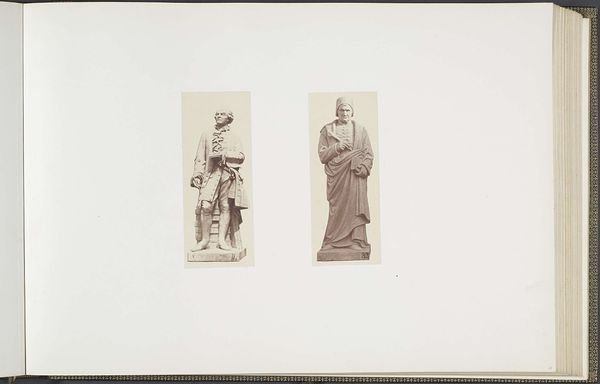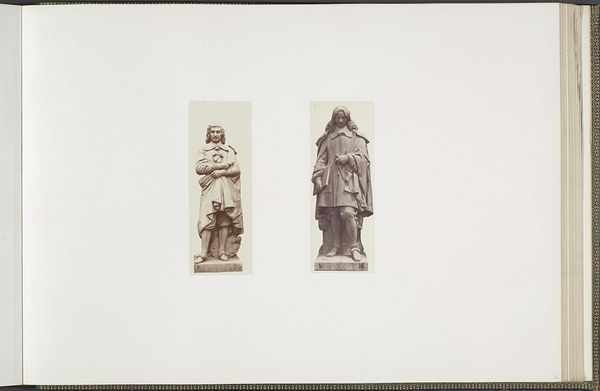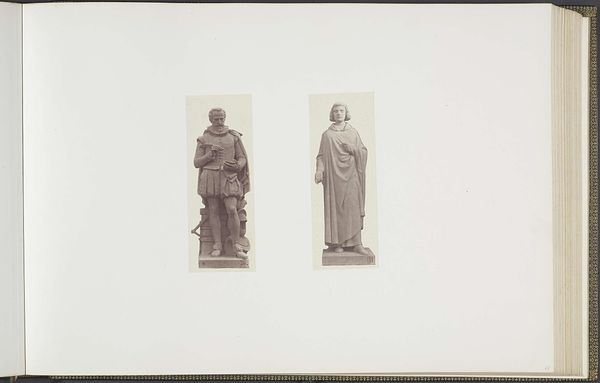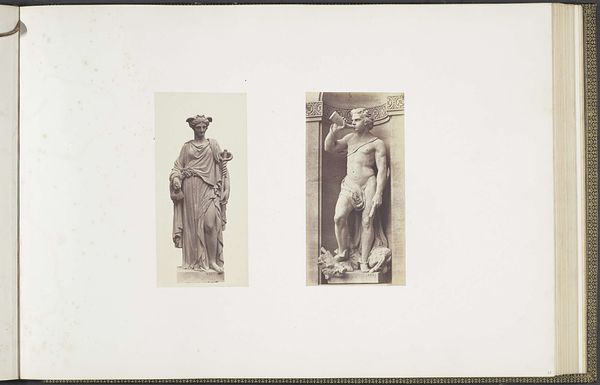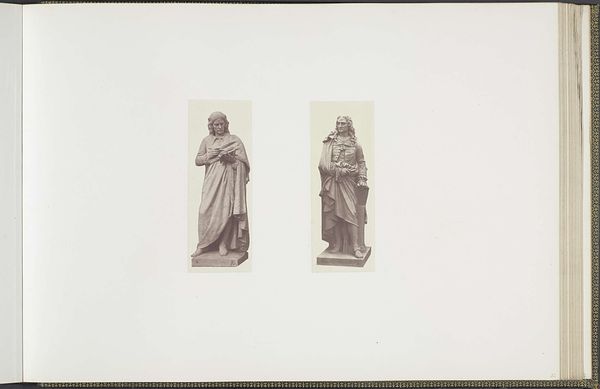
Gipsmodellen voor beeldhouwwerken op het Palais du Louvre: links "Philippe de Commines" door Eugène Louis Lequesne en rechts "Amyot" door Pierre Travaux c. 1855 - 1857
0:00
0:00
print, photography, sculpture, gelatin-silver-print
#
portrait
# print
#
photography
#
sculpture
#
gelatin-silver-print
#
academic-art
Dimensions: height 382 mm, width 560 mm
Copyright: Rijks Museum: Open Domain
Curator: Here at the Rijksmuseum, we have Edouard Baldus's gelatin silver print from around 1855-1857, “Gipsmodellen voor beeldhouwwerken op het Palais du Louvre," showing plaster models of sculptures. The sculptures themselves depict Philippe de Commines by Eugène Louis Lequesne, and Amyot by Pierre Travaux. It has a surprisingly muted tone for what I imagine was a bold statement piece for its time. Editor: It’s austere, even. The figures are presented in isolation against that stark background. Immediately I’m drawn to the composition. The contrast is quite striking between the draping and rigid, and yet each has a kind of stoic repose, doesn’t it? Curator: Absolutely. Baldus was commissioned to document aspects of the Louvre's reconstruction under Napoleon III, and this image captures these sculptures which were intended to project a certain nationalistic, historical narrative. These men represent powerful figures who were part of France’s historical lineage, thus visually solidifying and lending credence to Napoleon’s vision for France. Editor: Tell me more about how Baldus renders the materiality of these plaster casts. It almost undermines their intended grandeur, doesn’t it? The photographic lens seems to democratize them. Stripping away their inherent authority to allow them, perhaps, a common, more tangible connection to the viewer. The texture appears smooth, even fragile. Curator: I agree. Baldus seems to subvert, consciously or not, that glorification by reminding us they are mere reproductions, stand-ins if you will, of historical might. This in itself is significant. He provides a discourse regarding what it means to construct, or perhaps more accurately reconstruct, a nation’s identity. Editor: Yes, they’re presented more as relics, which evokes an atmosphere that subtly questions the nature of representation. Curator: Indeed, which prompts us to consider: what and whom are we choosing to represent, and why? This speaks to a key component when dealing with historical legacies, particularly colonial ones: what's highlighted versus what's omitted shapes how history is collectively remembered and understood. Editor: Examining the stark contrasts and tonal subtleties, one gets this wonderful sense of the artist challenging the established Academic style in which the sculptures were formed. It allows for an interesting juxtaposition. Curator: A perfect illustration of the layered conversations within a single work. It underscores art’s capacity to invite these critical dialogues on the very nature of power, representation, and collective memory. Editor: Right, by revealing its own artifice. Fascinating.
Comments
No comments
Be the first to comment and join the conversation on the ultimate creative platform.

